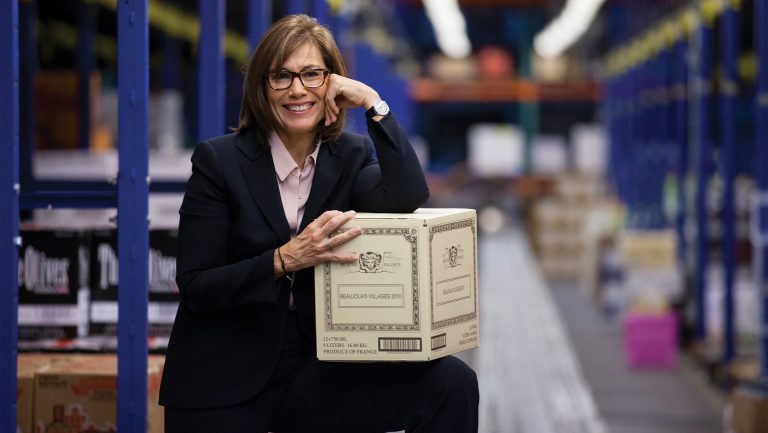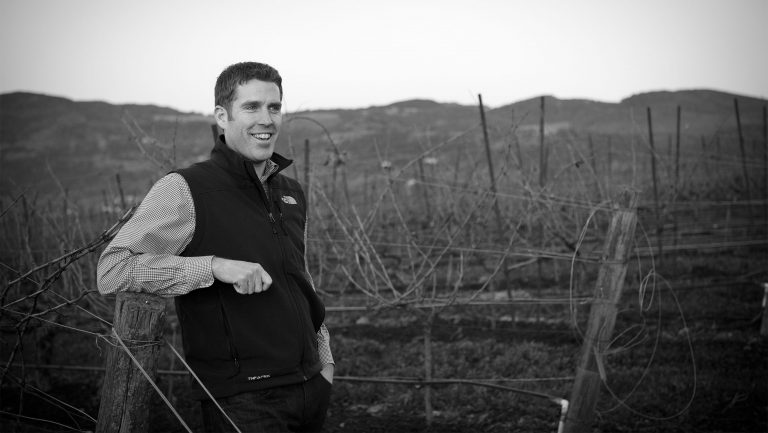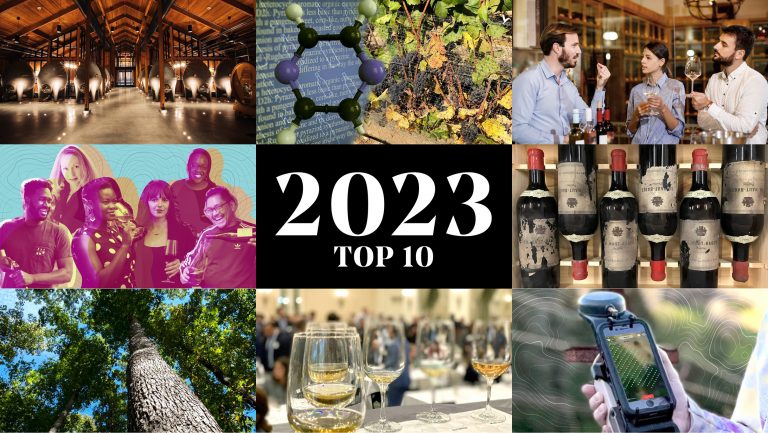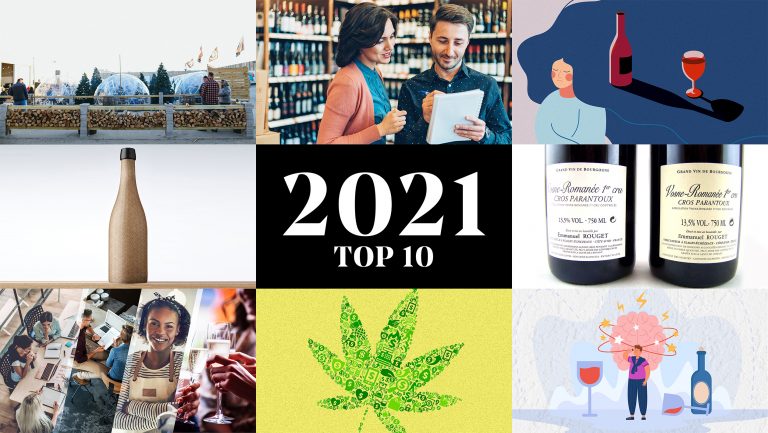Vaccinations are here, weather is warming, and restaurants in every state are now open at some capacity.
“In the last 45 days, the on-premise channel has significantly exceeded our expectations,” says Mark Fisher, the president of sales and marketing for Massachusetts-based Martignetti. Not surprisingly, the on-premise is up 325 percent compared to last year (according to Nielsen).
There is tremendous optimism across all three tiers. “Restaurant reopenings are being treated like full-on openings when it comes to ordering—complete revamping of wine lists across the board,” describes Michael Skurnik, of New York-based Skurnik Wines & Spirits. “Spring and summer will certainly be gangbusters business as people are coming out of a long hibernation.”

Don’t miss the latest drinks industry news and insights. Sign up for our award-winning newsletters and get insider intel, resources, and trends delivered to your inbox every week.
Yet challenges and major hurdles remain. We connected with 11 wholesalers to learn what ordering trends they are witnessing from their customers and what it tells us about the rebound for the drinks industry in coming months.
1. A “Roaring ’20s” Return? Yes, for Some Places
“States that have opened their on-premise have seen a significant return of their business,” says Chris Underwood, a board member at RNDC West (formerly Young’s Market Co). “One example is Arizona, where we experienced a record-setting on-premise month in March. Other states that have not fully reopened, such as California and Washington, are starting to see some life but it is coming in small waves.”
State-specific demographic trends are another major determining factor: “In our markets experiencing strong population growth—Arizona, Florida, Texas—we expect a V-shaped recovery [quick and sustained] with a stronger-than-normal summer and fall selling season,” says Ryan Schwartz, the president of Palomar Beverage Company, which operates distributorships in Arizona, Texas, Florida, and Minnesota. “In our Minnesota market, we anticipate a more gradual recovery as a more restrictive environment coupled with political unrest has delayed many of our customers’ plans to reopen.”
Rocco Lombardo, the president of Wilson Daniels, which has wholesale operations in New York, New Jersey, Connecticut, and Oregon, echoes the mixed-bag sentiment: “Markets like New York and California are still seeing difficult conditions, but places like Texas and Florida are thriving.”
Vacation destinations are seeing some of the swiftest comebacks, says Martignetti’s Fisher. “Resort areas have the most potential to experience the Roaring ’20s-style rebound—we are anticipating numbers that could possibly rival 2019. But metro areas will be much slower based on the lack of tourism and occupancy in office buildings.”
Domestic tourism, which replaced international travel last year, is predicted to stay strong. In Colorado ski resort towns Vail and Aspen, buyers “typically shut their buying off in the spring” but are continuing to stock up this year because their cellars were so depleted and visitors keep coming, reports Denver-based Natural Wine Company. “Our retail customers are very busy, too; we’re up with them almost 25 percent this year,” says owner Tim Bowen.
2. Outdoor Dining Remains Critical to Survival
The importance of outdoor dining to restaurants is potentially more critical than the speed of vaccinations, believes Eric Stewart, the president and owner of Vanguard Wines in Ohio, Kentucky, and Indiana. “People still want to be outside, and with warmer weather coming, restaurants are able to offer more comfortable outdoor dining experiences and open windows for enhanced ventilation,” he says.
Changes in outdoor dining permits have been—and are still—essential for restaurants to stay in business, particularly in markets like New York City, says Skurnik: “Outdoor dining has been the most incredibly important and welcome change,” he says. “I’m hopeful legislators will heed this advice, and embrace the new outdoor dining phenomenon long term.”

3. Reopened Restaurants Are Not Stealing Off-Premise Share
In spite of restaurants’ new alcohol-to-go sales privileges and the return of in-person dining, on-premise sales do not seem to be cutting into off-premise numbers. “The velocity off-premise continues to trend in a dynamic fashion,” says Lombardo. “In Q1 of this year, business was up an incredible 40 percent, with growth predominantly driven by the suburbs. The challenge for our wholesale business remains in Manhattan and the five boroughs where a large majority of employees have not returned to the workplace.”
Schwartz sees the same pattern: “We continue to see strong retail orders focusing on premium wines and spirits. We have seen virtually no loss of velocity in the off-premise, even as the on-premise channel gradually reopens.”
“While there are concerns about maintaining current growth rates, retailers continue to show solid performance,” says Lloyd Sobel, EVP and chief commercial officer for Breakthru Beverage Group. “We expect continued retail strength in the near-term,” fueled by the ready-to-drink (RTD) category and large spirit brands, he adds.
In Missouri, Susan McCullom, CEO of St. Louis-based Major Brands, reports that while there is some flattening of grocery sales, club and independent retail sales continue to “grow beyond our expectations” with leading spirits brands posting record numbers and the RTD category on fire.
4. Buyers Are Cautious on Volume—But Purchasing Premium
Wholesalers describe steady increases in both order volume and value since about mid-February in most markets, but every executive used the term “cautious optimism” to describe buyer behavior. Many cited restaurants offering extremely limited food and wine menus to keep costs down, and many operators still working through inventory from the past year.
“Caution is going to be key, especially for restaurants, for quite a long time, and I think many of the changes we’ve seen, such as wine list contraction, will continue,” says Skurnik.
Yet while purchase volumes are conservative, buyers are stocking high-value, premium bottles across the board. “If anything, premiumization has accelerated,” says Sobel. “We expect to see continued growth in the fine wine space, as well as in ultra-premium tequila, mezcal, Cognac, and North American whiskey.” McCullom predicts the same: “Premium brands will remain strong—on- and off-premise. Wine sales in the $15 to $20 range continue to grow, while lower price categories are slowing.”

5. Smaller Wine Lists Are Here to Stay
“Smaller wine lists will likely be around for a while until buyers have more confidence in the future and their businesses are stabilized,” says Underwood. “We continue to see consumers upgrading for higher wine quality, so we believe that premium wines will be strong and continue to take share.”
“Smaller lists both preserve cash and make it easier for the staff to understand the list, but higher priced wines still have a place on a limited wine list,” says Sobel. “Additionally, as on-premise accounts feel they have a more consistent cash flow, they will add more premium wines that align with consumer preferences.”
“The trend towards smaller wine lists was taking root for years, but the pandemic certainly amplified it,” says Lombardo. “It’s less capital intensive and can still provide an enjoyable dining experience.” Skurnik agrees, believing that this move to more “user-friendly and concise” lists is “maybe what the market wanted all along.”
Another wine list trend of note: A big jump in half-bottle sales. “There is a huge increase in the number of 375-milliliters on wine lists—and they are really selling,” says McCollum.
6. Party-Ready Millennials Are Driving the Comeback
Younger consumers were widely reported to be fueling the indoor dining scene during winter months, and they will continue to lead the resurgence, say wholesalers. “People definitely want to eat out again—but especially millennials,” says McCollum.
“Due to lack of other options for entertainment, eating out is the easiest way to return to normalcy,” says Fisher. “Millennials have been consistently supporting the on-premise, and now the vaccinated boomers are adding additional support.”
7. Large Gatherings and Events Are Already Industry Game Changers
“There’s no doubt in my mind that the Roaring ’20s are taking root in 2021—we’ve been using this phrase for months,” says Stewart. “People are beginning to make big plans for their deferred important events like graduations, weddings, anniversaries, and reunions, and businesses need to entertain clients. While much of this will occur next year, plans are falling into place now. Dining and large reservations for events including the Kentucky Derby and Indianapolis 500 will resume in our region.”
In Arkansas, Caitlin Craig, vice president sales for Moon Distributors, Inc., is seeing robust on-premise rebound overall, but she is particularly excited by large venues returning. “Sports and music venues are making plans to reopen, which is encouraging for all our on-premise partners. We are seeing increased order volume which indicates they are restocking in preparation for dining experiences to resume in larger gatherings.”
8. Demand for Esoteric, Niche Wines Returns
While consumers gravitated to familiar brands throughout much of the last year, there is heightened demand for discovery fueling lesser-known brands across many wholesalers’ portfolios.
“We are seeing more opportunities for the niche and smaller producers,” says Jaime Rubin, vice president business development at Massachusetts-based Ruby Wines. “Customers are spending more time in stores, allowing buyers to be able to reconnect and recommend new items; they are interested in trying new wines rather than quickly ordering curbside.”
Retailers are starting to buy more adventurously in all of Vanguard’s markets, reports Stewart. “Our customers are purchasing in different price points, more esoteric categories, and lesser-promoted wine regions than they have before—and their consumers are buying them. All of our pre-sell campaigns are selling out. It’s proving the difference that small, quality-driven producers can make in our portfolio.”

9. Imports Rebound—Even the Tariff-Impacted Ones
While the tariff suspension has yet to impact prices on current inventory of EU-imported wines in most wholesalers’ warehouses, which were purchased during the tariff period, it’s not curbing enthusiasm for these wines. “We are seeing a rebound in import buying—especially European wines—even at the current tariff-affected price levels,” says Palomar’s Schwartz.
Stewart also reports a surging interest in imported wines. “As many accounts begin to reactivate with us, we are selling out all of our imported spring releases before they even land. The response to our book is really strong.”
10. Shipping Delays and Staff Shortages Present Serious Challenges
Reopening restaurants are struggling to find employees. “Restaurants are bullish about a recovery, but it’s being slowed by the challenge of finding personnel,” McCollum says. “It seems like every on-premise account is in need of staffing. And it’s increasingly hard to compete for people.”
“Staffing is a huge issue,” Fisher also observes. “The staff that usually migrates in from Europe to support resorts and restaurants is unable to get here.”
Shipping delays and increased costs are additional setbacks, reports Natural Wine’s Bowen. “COVID really threw a wrench into global shipping—container costs are running 10 to 15 percent higher than normal, ships are running four to six weeks behind, and refrigerated containers are becoming harder to come by. We tried to mitigate that by buying more from Europe now, to avoid shipping in the middle of the summer.”
11. There’s Still a Long Road Back
Lombardo cautions against unrealistic expectations: ”Roaring ’20s-like rebound? If you recall, the ’20s created a bubble which isn’t something we necessarily want to replicate.” He’s hopeful for a more “long-term, sustainable recovery, which depends upon improving employment figures and preventing inflation.”
“It’s worth remembering that there has been tremendous trauma in the past year for hospitality—30 percent of on-premise licenses filed for bankruptcy in the last year,” adds Lombardo.
While optimistic for the coming months, McCollum, like most wholesalers, already has her eye on the end of the year. “Summer will be strong, but we really think the holidays and the ringing in of 2022 will bring a sense of euphoria!”

Dispatch
Sign up for our award-winning newsletter
Don’t miss the latest drinks industry news and insights—delivered to your inbox every week.
Kristen Bieler is the former editor in chief of SevenFifty Daily and the Beverage Media Group publications. Based in New York City, she has been writing about wine, spirits and food for nearly two decades, and her work has appeared in GQ, TASTE, and Food & Wine Magazine’s Annual Wine Guide, among others. She is also a judge at the Ultimate Wine Challenge. Follow her on Instagram: @bielerkristen.








